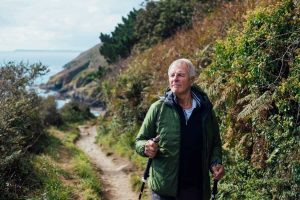This article is reprinted by permission from NextAvenue.org.
The Elder Justice Act, created to provide a coordinated federal response to prevent, detect and treat elder abuse, was introduced in Congress in 2002 with bipartisan support. It didn’t pass.
Re-introduced every year thereafter, the bill finally became law when tucked into the Affordable Care Act in 2010 “as a barnacle on a huge whale,” in the words of its architect, M.T. Connolly. But Congress didn’t fund The Elder Justice Act until 2015 — and even then, it allocated just a pittance ($4 million).
“We lacked a political constituency. It was very frustrating,” Connolly, founder of the U.S. Department of Justice’s Elder Justice Initiative and a MacArthur “Genius” award winner, told me. “I still don’t think there’s any reason for jubilation about the law. We need to do the important work of building advocacy networks and a constituency.”
‘The Measure of Our Age’
Connolly, a lawyer, has now written the book “The Measure of Our Age: Navigating Care, Safety, Money & Meaning Later in Life,” which describes her disappointment about how America deals with elder justice and elder fraud (and how it doesn’t).
Each year, roughly 10% of Americans aged 60 and older experience elder abuse and, Connolly said, elder financial abuse is on the rise. Victims over 60 lose over $28 billion annually to elder financial exploitation, according to a recent AARP study.
Connolly also includes in her book — and told me — what she thinks could be done to better serve the nation’s older adults and their families.
Don’t miss: Tony Bennett taught us 4 lessons about aging
The crisis-driven approach doesn’t work
“We’ve tolerated nursing home problems for decades without doing much about them. We tolerate increasing rates of financial exploitation without doing anything about it,” Connolly said.
“I think part of it is it’s endemic to how we do things, including in the aging field, which is that we’re crisis-driven and reactive as opposed to being proactive. We do not get out ahead of problems.”
She faults banks and the financial services industry generally for not being more proactive in spotting potential elder financial fraud against their customers and halting it.
All told, Connolly believes the nation’s elders are facing “a lot of unnecessary suffering, unnecessary conflict and unnecessary harm.”
One reason, she said, is “we don’t have a good language to discuss these issues or to understand the complexity of how they relate to one another.”
‘Aging doesn’t pick a lane’
She recalled an elder justice expert saying that if she wanted to make older adults safer and help them after becoming victims, she needed to pick a lane — that is, choose one problem to focus on.
“I tried really hard. Is it justice? Is it health? Is it money? Is it services?” she said. “I couldn’t pick a lane because aging doesn’t pick a lane. It’s like life; it veers through all those lanes.”
But Connolly said society has the potential to substantially improve elder justice “if we can take it more seriously, prepare better for aging and really appreciate the gift of time as opposed to just thinking: ‘Oh, my God, the wrinkles!’ ‘Oh, my God, it’s so horrible!’”
Advocates restorative justice
Connolly is an ardent proponent of “restorative justice,” which rejects the traditional adversarial, polarizing, retributive approach of elder justice and elder fraud prosecutions.
Instead, restorative justice brings together people affected by elder justice crimes or conflicts with members of their families, communities and social service agencies — sometimes through victim/offender reconciliation or mediation.
Connolly points to the elder justice tool kit written by researchers Juanita Davis and Katie Block, which included a series of videos about helping older African-American elder abuse survivors. “In interview after interview, people said, ‘If you’re not going to help my family, you’re not going to help me,’” said Connolly.
From the archives (April 2021): How to protect your loved ones from elder financial abuse
The RISE model
She and other elder justice authorities have created an integrated and restorative elder-abuse intervention model known as RISE (operating on Relational, Individual, Social and Environmental levels), which has been used and proven effective in Maine since 2019.
It complements Adult Protective Services’ (APS) work and focuses on the older adult victim’s goals and needs as well as support for the “harmer” and the victim’s relationship with that person, if desired.
Other states and Canada are considering offering RISE. “We’ve got a tiger by the tail,” Connolly said, “because APS has been so enthusiastic.”
She notes there’s a pilot RISE case under way in Washington state involving a grandmother and a grandson.
“The grandson has had longstanding addiction issues, including stealing from his grandmother for years, and it has caused all sorts of strife in the family,” said Connolly. The grandmother wanted to help her grandson “and not get him in more trouble,” Connolly added.
A local drug court has broken its rules and accepted the case because of the grandson’s agreement to participate in a RISE program. He has completed inpatient drug treatment, is in clean and sober housing and ready to restore the relationship with his grandmother.
When the prosecutor called the grandmother with this news, Connolly told me, “she wept and said it was the best gift she ever had.”
If she could create the Act again…
Connolly told me that if she could draft the Elder Justice Act all over again, she would make elder abuse prevention and research the top priorities so society could better learn what works and then devote resources and programs accordingly.
These days, she said, the focus is on what to do “after the money’s gone, the harm’s been done, the tears have been wept and often lives have been lost or families have been fractured.”
Connolly said U.S. government agencies including the Consumer Financial Protection Bureau and the Federal Trade Commission put out materials about how to avoid scams but not evidence-based information about how to stop them. “We don’t know what works,” she said.
The government did that kind of research for automobile crashes and smoking, she added, which led to federal mandates for seat belts and cigarette labeling, which led Americans to change their habits to protect themselves and others.
What she wants to see
Although there’s now a flurry of activity to improve the nation’s nursing homes and protect its residents, Connolly said she is “in watchful waiting” to see if significant improvements happen.
Read next: Apps for all? Why some older people are locked out by digital ageism.
She’d also like to see Congress do more to learn how well guardianship in America is serving older adults needing supervision and care.
In “The Measure of Our Age,” Connolly asks: What makes aging so much harder than it should be? Her answer: our lack of preparation and underestimation of aging as well as our fear and denial about it.
“It is a privilege to be alive,” she told me, “so let’s think about it in that context.”
Richard Eisenberg is the former senior web editor of the Money & Security and Work & Purpose channels of Next Avenue and former managing editor for the site. He is the author of “How to Avoid a Mid-Life Financial Crisis” and has been a personal finance editor at Money, Yahoo, Good Housekeeping, and CBS Moneywatch.
This article is reprinted by permission from NextAvenue.org, ©2023 Twin Cities Public Television, Inc. All rights reserved.
More from Next Avenue:
This post was originally published on Market Watch






